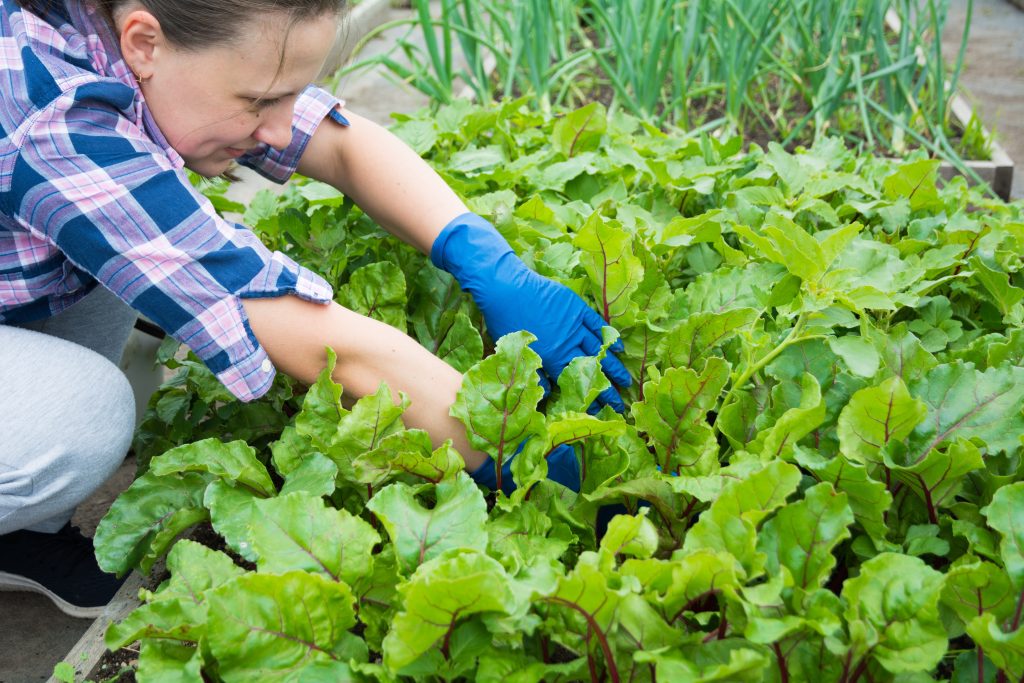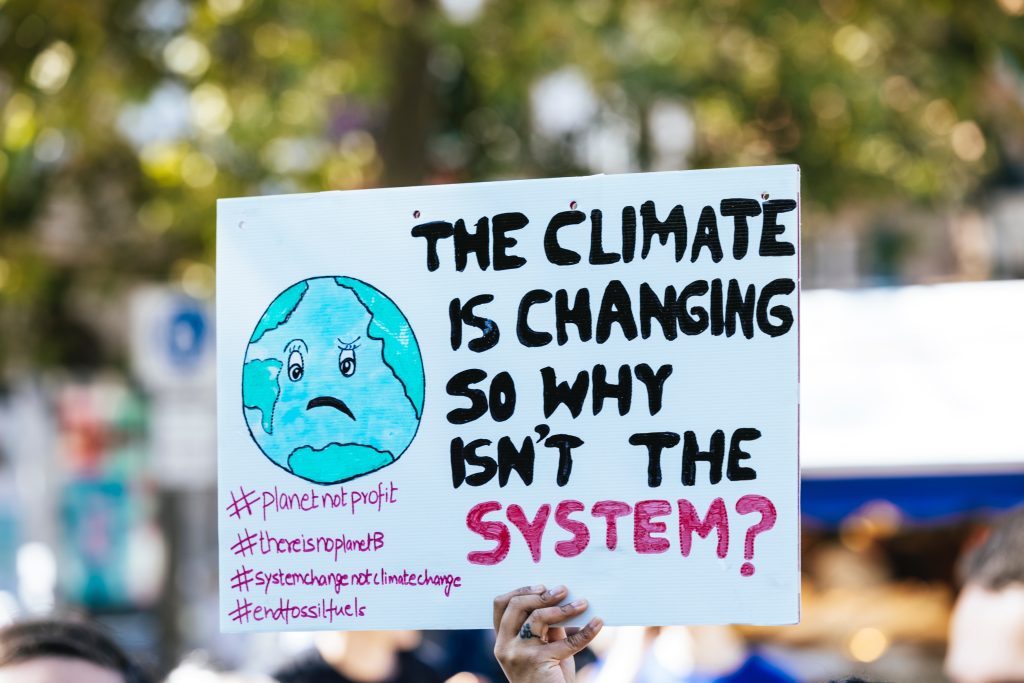In today’s fast-paced world, adopting an eco-friendly and sustainable lifestyle has become more crucial than ever. As we witness the impacts of climate change and environmental degradation, it’s imperative that each of us takes responsibility for our actions and makes conscious choices to reduce our ecological footprint. Here are 10 practical ways to become eco-friendly and embrace a sustainable lifestyle.
Definition of an Eco-Friendly Lifestyle
Living an eco-friendly life involves making conscious choices to minimize one’s negative impact on the environment. It’s about adopting practices that promote sustainability, biodiversity, and the overall well-being of the planet.
Embracing an eco-friendly lifestyle means considering the environmental consequences of daily choices, from the products we use to the food we consume and the modes of transportation we opt for. For example, choosing energy-efficient appliances, reducing waste, and supporting sustainable brands are all part of this lifestyle.
Take, for instance, the decision to invest in energy-efficient appliances. By selecting devices with the Energy Star label, individuals not only reduce their energy consumption but also contribute to a decrease in overall greenhouse gas emissions. This simple choice aligns with the core principles of an eco-friendly lifestyle, emphasizing the importance of minimizing one’s carbon footprint.
Importance of Sustainable Living
Understanding the importance of sustainable living is the first step towards making positive changes. From mitigating climate change to conserving resources, an eco-friendly lifestyle contributes to a healthier planet for current and future generations.
Consider the impact of single-use plastics on marine life and ecosystems. Choosing reusable alternatives like stainless steel water bottles or cloth shopping bags significantly reduces the amount of plastic waste that ends up in oceans and landfills. By acknowledging the interconnectedness of our actions with the environment, individuals can appreciate the pivotal role sustainable living plays in preserving the delicate balance of our ecosystems.
In essence, the introduction sets the stage for a comprehensive exploration of practical steps towards sustainability. It emphasizes the interconnectedness of individual choices with the broader environmental landscape and highlights the significance of adopting an eco-friendly lifestyle for a more sustainable future.
10 Strategies for Developing an Eco-Friendly and Sustainable Lifestyle
1. Assessing Your Current Lifestyle
Environmental Impact Evaluation
Begin your eco-friendly journey by evaluating your current lifestyle’s environmental impact. This involves a critical examination of daily habits, consumption patterns, and resource usage. For example, take a closer look at your energy consumption. If your home is heavily reliant on traditional incandescent light bulbs, transitioning to energy-efficient LED bulbs can be a straightforward yet impactful change.
Consider the energy savings and reduced carbon footprint that come with LED bulbs. A single LED bulb can last up to 25,000 hours, compared to the 1,000 hours of a typical incandescent bulb. This not only minimizes the frequency of replacements but also significantly lowers energy consumption over time. Through this assessment, you identify a specific area—home lighting—where a small change can lead to considerable environmental benefits.

Identifying Areas for Improvement
Pinpoint specific aspects of your daily routine that can be modified for a greener lifestyle. This may involve waste reduction, water conservation, or sustainable transportation choices. For instance, if you notice a high volume of single-use plastics in your daily life, consider alternatives such as reusable water bottles, cloth bags, or containers for takeaway food.
Imagine the impact of reducing single-use plastics on a personal and global scale. By opting for reusable alternatives, you not only minimize your contribution to the growing plastic pollution but also inspire others to make similar choices. This small adjustment in your lifestyle becomes a tangible step towards sustainability, demonstrating the potential for individual actions to drive positive change.
2. Sustainable Practices at Home
Energy-Efficient Appliances
Upgrade to energy-efficient appliances to reduce your household’s energy consumption. Let’s delve into an example: the transition from a conventional refrigerator to an Energy Star-rated model. Energy Star appliances are designed to meet strict energy efficiency guidelines set by the SIRIM (Malaysia) or your country energy efficiency regulator.
Consider the energy savings achieved through this switch. Energy Star refrigerators, on average, use 10% less energy than their non-certified counterparts. Additionally, they often incorporate advanced features such as improved insulation and compressor technology, further contributing to reduced energy usage. By making this sustainable choice, not only do you cut down on electricity bills, but you also decrease the demand for energy production, ultimately lessening the environmental impact.
Waste Reduction Strategies
Implementing waste reduction strategies at home involves conscious choices in disposal and consumption. For instance, let’s explore composting as a waste reduction practice. Instead of discarding organic kitchen waste, you can create a compost pile or use a composting bin.
The beauty of composting lies in its transformative nature. Kitchen scraps, yard trimmings, and even some paper products decompose into nutrient-rich compost, benefiting your garden or plants. This practice not only diverts organic waste from landfills but also enriches the soil, promoting healthier plant growth. By embracing composting, you actively contribute to waste reduction and participate in the natural cycle of nutrient recycling.

Water Conservation Tips
Conserving water at home is a vital aspect of sustainable living. Consider the installation of low-flow fixtures in your bathroom and kitchen. These fixtures are designed to minimize water usage without compromising performance.
Take a low-flow showerhead, for instance. It reduces water flow without sacrificing water pressure, leading to substantial water savings over time. An average family can save thousands of gallons of water per year by adopting such fixtures. This not only contributes to environmental conservation but also results in lower water bills for households. By integrating water conservation tips into your daily routine, you actively engage in sustainable practices that benefit both your wallet and the planet.
3. Sustainable Transportation
Public Transport and Carpooling
Opting for public transportation or carpooling is a significant step towards sustainable transportation. Consider the impact of commuting habits on both the environment and personal expenses. For instance, imagine a scenario where you decide to carpool with coworkers instead of driving separately.
By carpooling, you not only reduce the number of vehicles on the road but also minimize individual carbon footprints. Fewer cars mean less traffic congestion and lower emissions. This choice not only benefits the environment but also creates a sense of community among coworkers. Shared rides contribute to a more sustainable urban transportation system while fostering social connections.

Embracing Bicycles and Electric Vehicles
Another sustainable transportation option involves embracing bicycles or electric vehicles (EVs). Let’s focus on the benefits of cycling. Suppose you choose to ride a bicycle for short-distance commutes instead of relying on motorized transportation.
Cycling not only provides a pollution-free mode of transport but also contributes to personal health and well-being. It reduces the demand for fossil fuels, decreases traffic congestion, and promotes a more active lifestyle. Additionally, the growing popularity of electric bicycles adds a sustainable twist, offering an eco-friendly alternative to traditional bikes. Embracing these options aligns with the principles of sustainable transportation, addressing both environmental and health-related concerns.



When it comes to electric vehicles, advancements in technology have made them more accessible. Transitioning from a conventional gas-powered vehicle to an electric one significantly reduces greenhouse gas emissions. EVs have a lower environmental impact, especially in regions where electricity generation is sourced from renewable energy. By making these choices, individuals actively contribute to the reduction of air pollution and dependence on non-renewable resources.
4. Eco-Friendly Shopping Habits
Choosing Sustainable Brands
Supporting sustainable brands is a crucial element of eco-friendly shopping habits. Let’s explore the concept with an example: selecting clothing from a brand that prioritizes ethical and environmentally friendly practices. Imagine you’re in need of a new pair of jeans, and you decide to choose a brand known for its commitment to sustainability.
Sustainable clothing brands often focus on using organic materials, minimizing water usage in production, and ensuring fair labor practices. By opting for such brands, you contribute to a supply chain that values the planet and its people. This choice not only promotes responsible consumerism but also encourages other companies to adopt similar ethical standards. In essence, choosing sustainable brands is a powerful way to use your purchasing power for positive environmental and social impact.

Reducing Single-Use Plastics
Minimizing the use of single-use plastics is another eco-friendly shopping habit with far-reaching effects. Consider the example of grocery shopping. Instead of relying on plastic bags for every purchase, you decide to bring your reusable bags.
This simple switch significantly reduces your contribution to plastic pollution. Single-use plastics, such as bags, take hundreds of years to decompose and often end up in oceans, harming marine life. By consistently using reusable bags, you actively participate in reducing plastic waste. Moreover, many stores offer incentives for customers who bring their reusable bags, contributing to a positive cycle of environmentally conscious shopping.
When it comes to single-use plastics, small changes can have a big impact. For instance, choosing products with minimal or eco-friendly packaging reduces the overall waste generated from your purchases. By making informed choices and supporting businesses with sustainable packaging practices, you contribute to a more eco-friendly and responsible consumer culture.
5. Sustainable Diet Choices
Plant-Based Diet Benefits
Exploring the benefits of a plant-based diet is a pivotal aspect of sustainable living. Consider the example of incorporating plant-based proteins into your meals. Instead of relying solely on animal products for protein, you choose alternatives such as legumes, tofu, or quinoa.
Plant-based proteins have a lower environmental impact compared to animal-based proteins. Producing plant-based proteins generally requires less land, water, and resources, and it generates fewer greenhouse gas emissions. By incorporating these alternatives into your diet, you actively contribute to reducing the environmental footprint associated with livestock farming. This choice not only promotes personal health but also aligns with the principles of sustainability by lessening the strain on natural resources.

Reducing Food Waste
Combatting food waste is another essential element of a sustainable diet. Imagine implementing a simple strategy: meal planning. By planning your meals, you can purchase only what you need and use ingredients efficiently, reducing the likelihood of food spoilage.
Meal planning helps in organizing your grocery shopping and minimizing impulse purchases, which often lead to food waste. It also encourages the use of leftovers for subsequent meals, reducing the overall amount of discarded food. By actively engaging in practices that cut down on food waste, you contribute to a more sustainable food system and promote mindful consumption.
Moreover, consider the concept of “ugly” produce. Many fruits and vegetables deemed aesthetically imperfect often go to waste because they don’t meet traditional beauty standards. Choosing to purchase and consume these “ugly” but perfectly nutritious items supports initiatives aimed at reducing food waste in the agricultural supply chain.
6. Sustainable Fashion
Fast Fashion Impact
Understanding the environmental impact of fast fashion is crucial for adopting sustainable fashion practices. Consider the example of purchasing clothing from fast fashion brands versus sustainable and ethical alternatives. Fast fashion involves the rapid production of inexpensive clothing, often resulting in poor working conditions for labourers and a significant ecological footprint.
When you choose fast fashion, you contribute to a cycle of overconsumption and environmental degradation. Cheaply made clothes are often discarded after only a few wears, leading to an increase in textile waste. On the other hand, sustainable fashion emphasizes quality over quantity, promoting clothing that lasts longer, utilizes eco-friendly materials, and adheres to ethical production practices.

Thrifting and Sustainable Clothing
Embracing thrifting as a sustainable fashion choice can have a positive impact on both the environment and your wardrobe. Thrift shopping involves purchasing second-hand clothing, reducing the demand for new production. Imagine finding a unique and stylish piece in a thrift store instead of buying a brand-new item.
Thrifting not only gives pre-loved clothing a second life but also minimizes the environmental impact associated with the production of new garments. It’s a sustainable way to stay fashionable without contributing to the negative consequences of fast fashion. By participating in the circular economy of clothing, you actively support a more sustainable and responsible approach to fashion consumption.
Furthermore, choosing sustainable clothing brands that prioritize eco-friendly materials, ethical production, and fair labour practices is a powerful way to make a positive impact. By investing in quality pieces that stand the test of time, you contribute to a shift towards a more sustainable and mindful fashion industry.
7. Eco-Friendly Gardening
Benefits of Organic Gardening
Understanding the benefits of organic gardening is a key component of adopting eco-friendly practices. Consider the example of transitioning from conventional to organic gardening methods. Conventional gardening often involves the use of synthetic pesticides and fertilizers, which can have detrimental effects on soil health and the broader ecosystem.
By embracing organic gardening, you prioritize natural and sustainable approaches. For instance, instead of synthetic fertilizers, you might use compost derived from kitchen scraps and yard waste. This not only enriches the soil with essential nutrients but also promotes a healthy and diverse microbial ecosystem. By avoiding harmful chemicals, you contribute to soil fertility, reduce water pollution, and support biodiversity in your garden.

Composting Practices
Implementing composting practices is a fundamental step in eco-friendly gardening. Composting involves recycling organic waste such as kitchen scraps, leaves, and yard trimmings to create nutrient-rich compost. Consider setting up a compost bin or pile in your garden.
The benefits of composting extend beyond providing natural fertilizer for your plants. It helps reduce the amount of organic waste sent to landfills, where it would otherwise produce harmful methane gas. Composting at home is a simple yet powerful way to contribute to waste reduction and promote sustainable gardening practices.
Moreover, the compost you generate can be used to enhance the soil structure and water retention in your garden. This not only benefits your plants but also reduces the need for synthetic fertilizers, further minimizing the environmental impact of gardening.
8. Community Engagement
Participating in Local Sustainability Initiatives
Engaging with local sustainability initiatives is a meaningful way to contribute to positive environmental change. Consider the example of joining a community-led tree-planting event. Many local organizations and environmental groups organize tree-planting initiatives to combat deforestation and enhance green spaces.
By actively participating in such events, you contribute to the overall well-being of the community. Trees play a crucial role in absorbing carbon dioxide, improving air quality, and providing habitat for local wildlife. This type of community engagement not only fosters a sense of collective responsibility but also has tangible and lasting effects on the local environment.
Spreading Awareness
Another vital aspect of community engagement is spreading awareness about sustainability practices. Imagine organizing a neighborhood workshop or seminar to discuss eco-friendly living and share practical tips. This creates an opportunity for community members to learn from each other, exchange ideas, and collectively work towards a more sustainable lifestyle.
By spreading awareness, you empower individuals to make informed choices, leading to a more environmentally conscious community. This might include discussions on waste reduction, energy conservation, or the importance of supporting local and sustainable businesses. Through such engagements, the ripple effect of sustainable living can extend beyond individual households to create a community-wide impact.
Additionally, leveraging social media platforms or community newsletters to share success stories, tips, and upcoming sustainability events can further amplify the message. The power of community engagement lies not only in individual actions but in the collective effort to create positive environmental change.
9. Overcoming Common Challenges
Balancing Convenience and Sustainability
Finding a balance between convenience and sustainability is a common challenge in adopting eco-friendly practices. Consider the example of meal preparation. While it may be more convenient to rely on pre-packaged, processed foods, choosing to prepare meals from scratch using fresh, locally sourced ingredients can be more sustainable.
Overcoming this challenge involves planning and organization. By dedicating time to plan meals, create shopping lists, and prepare ingredients in advance, you strike a balance between the convenience of quick meals and the sustainability of mindful consumption. This example illustrates how overcoming the convenience-sustainability challenge requires intentional decision-making and a commitment to long-term benefits.

Financial Considerations
Addressing financial considerations is another common challenge when adopting a sustainable lifestyle. Let’s explore the example of transitioning to renewable energy sources for your home. While installing solar panels or investing in energy-efficient appliances may have an upfront cost, it’s essential to consider the long-term financial benefits.
By generating your electricity through solar panels, you can potentially reduce or eliminate monthly energy bills over time. Similarly, energy-efficient appliances may have a higher initial cost but often result in significant savings on utility bills in the long run. Overcoming the financial challenge involves viewing sustainable choices as investments that pay off over time, contributing to both environmental and economic well-being.
10. Celebrating Successes
Recognizing Small Achievements
Celebrating successes, no matter how small, is crucial in maintaining motivation on the journey towards sustainability. Consider the example of successfully reducing single-use plastics in your daily life. Every time you remember to bring a reusable water bottle or refuse a plastic bag, it’s a victory worth celebrating.
Create a visual representation of your achievements, such as a “green” checklist or a diary documenting sustainable choices. Share these milestones with friends and family, turning it into a collective celebration. Recognizing and celebrating small achievements builds a positive mindset and reinforces the idea that individual actions contribute to significant environmental impact.

Encouraging Others to Join
Inspiring others to join in sustainable practices is a success in itself. Imagine sharing your eco-friendly journey with friends, family, or colleagues and encouraging them to make similar changes. Hosting a small gathering to showcase your sustainable lifestyle, sharing tips, and even organizing a community clean-up day are excellent ways to spread the message.
By influencing others, you amplify the impact of your individual efforts. Celebrate the success of inspiring change in others and building a community that values sustainability. Acknowledging the collective achievements of a group creates a sense of shared responsibility and accomplishment.
Conclusion
In conclusion, embracing an eco-friendly lifestyle is a journey filled with meaningful changes that extend beyond individual actions. From assessing your current lifestyle to adopting sustainable practices at home, making eco-conscious transportation choices, and cultivating eco-friendly habits in shopping, diet, fashion, and gardening, each decision contributes to a more sustainable future. By recognizing the interconnectedness of our choices with the environment, we empower ourselves to be agents of positive change. Small, intentional actions accumulate to create a collective impact that reverberates through communities and transcends borders.

As we navigate the challenges of balancing convenience with sustainability and address financial considerations, it’s essential to celebrate the successes along the way. Whether it’s reducing single-use plastics, adopting plant-based diets, or inspiring others to join the journey, each achievement is a step towards a more harmonious relationship with the planet. The recognition of these successes not only reinforces the commitment to a sustainable lifestyle but also inspires others to embark on their own eco-friendly paths.
In this collective effort, community engagement plays a vital role. Participating in local sustainability initiatives, spreading awareness, and celebrating achievements within communities create a ripple effect that transcends individual actions. Through these shared endeavours, we build a more environmentally conscious and resilient community, fostering a sense of responsibility for the well-being of our planet. So, let’s continue this journey with a shared commitment to sustainability, knowing that every positive choice brings us closer to a greener, healthier future.






